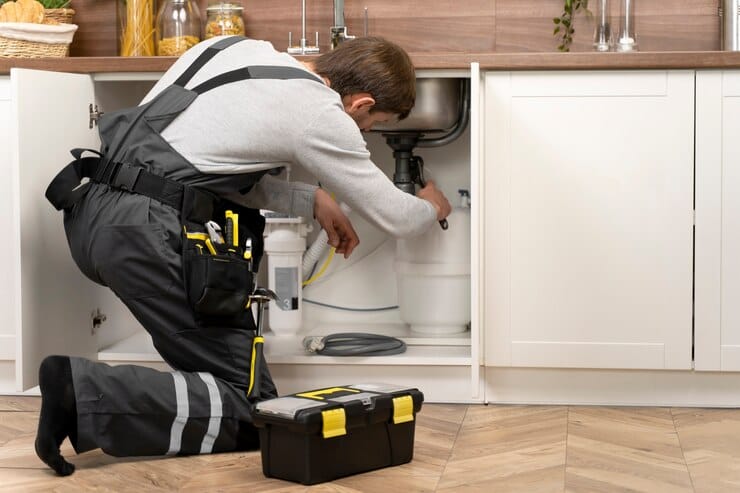
Water damage can cause significant disruptions and financial burdens for both residential and commercial property owners. Whether it’s due to burst pipes, flooding, or other unforeseen events, the potential for water damage is an ever-present risk that demands ongoing attention and proactive prevention. However, with the right strategies in place, you can take effective measures to minimize the likelihood of water damage, saving yourself from costly repairs, property damage, and potential health hazards associated with water damage and mold growth.
As a trusted provider of world-class remodeling and general contracting services in Virginia, Maryland, and Washington DC, TSP Contracting possesses comprehensive knowledge of the most effective preventative measures that property owners in our region can employ to minimize water damage risk. In this informative and practical guide, we will share our expert insights and advice, helping you better understand the various tactics and solutions you can implement to maintain the integrity and safety of your residential or commercial property.
Our goal is to empower you with the knowledge and tools necessary to proactively address potential water damage risks and protect your valuable assets. This guide will cover a wide range of topics, including the importance of regular maintenance, the benefits of water-resistant building materials, and the crucial role technology can play in detecting and preventing water damage. In sharing this valuable information, we strive to help you create a resilient property environment that can withstand potential water damage threats, providing peace of mind and long-term value for our valued clients.
Regular Maintenance: The Key to Water Damage Prevention
One of the most effective ways to minimize water damage risk is to prioritize regular maintenance for your property. Proactive upkeep can help you identify potential issues before they evolve into costly and disruptive problems. Here are some essential maintenance tasks to incorporate into your routine:
- Inspect plumbing systems: Regularly check your plumbing fixtures and systems for leaks, signs of wear, or corrosion. Replace or repair any compromised components to avoid potential leaks and ruptures.
- Clean gutters and downspouts: Ensure your gutters and downspouts are debris-free to prevent blockages that can lead to water overflow, seepage, and damage.
- Maintain HVAC systems: Routinely clean and service your HVAC systems to avoid condensation buildup and potential water damage caused by inefficient operation.
- Check your roof: Inspect your roof for any damage or wear that could lead to leaks during heavy rain or snow.
By staying on top of property maintenance, you can catch and address potential water damage threats before they have a chance to cause significant harm.
Embrace Water-Resistant Building Materials and Design
The choice of materials and design elements can have a significant impact on your property’s ability to resist water damage. Invest in water-resistant building materials and practical design features to protect your property from water-related issues:
- Waterproof flooring: Choose water-resistant flooring options, such as luxury vinyl plank, ceramic tile, or stained concrete, to minimize water absorption and prevent damage.
- Moisture-resistant drywall: Opt for specialized drywall products designed to resist moisture, reducing the risk of water damage and mold growth.
- Vapor barriers: Install vapor barriers in areas prone to moisture, such as basements and crawl spaces, to limit the infiltration of dampness and protect your property’s structural components.
Incorporating water-resistant materials and design elements into your property can provide an extra layer of protection against water damage.
Utilize Technology for Early Detection and Prevention
Incorporating technology into your water damage prevention strategy can provide valuable early warning signals and prevent further damage. Consider implementing these advanced tools to safeguard your property:
- Leak detection sensors: Install water leak sensors near appliances, plumbing fixtures, and other high-risk areas. These devices can alert you to leaks and some models may even shut off the water supply to prevent further damage.
- Smart home systems: Integrate smart home technologies that can monitor your property’s environmental conditions, such as humidity levels, and send alerts when issues arise. These systems can help you take prompt action to prevent water damage.
- Sump pump alarms: Equip your sump pump with an alarm system to provide early notification in case of a malfunction, allowing you to address the problem before water damage occurs.
By leveraging technology, you can further enhance your property’s defenses against the threats of water damage.
Develop a Comprehensive Emergency Response Plan
While preventative measures can significantly reduce the risk of water damage, it’s essential to have an emergency response plan in place to mitigate potential damage if an issue arises. Follow these steps to create a comprehensive plan:
- Identify vulnerabilities: Assess your property to identify high-risk areas or systems, such as basements, plumbing lines, and HVAC equipment.
- Establish a response team: Designate a team of individuals responsible for responding to water damage emergencies and ensure they have the necessary knowledge and resources to address the situation.
- Create an action plan: Develop a step-by-step plan for responding to water damage incidents, including shut-off procedures, cleanup processes, and restoration efforts.
- Communicate with stakeholders: Inform all relevant parties, such as tenants or employees, of the emergency response plan to ensure everyone knows their role in the event of a water damage incident.
Having a well-prepared emergency response plan will enable you to act quickly when necessary, minimizing the damage and cost associated with water-related incidents.
Conclusion
Preventing water damage in residential and commercial properties requires a multi-faceted approach that includes regular maintenance, smart design, technological innovation, and thorough planning. By implementing these preventative measures and strategies, you can reduce the risk of water damage and create a safer, more resilient environment for your property. If you need expert advice and support for your water damage prevention efforts, TSP Contracting’s dedicated and experienced team is here to help. Contact us today to learn more about our array of services tailored to safeguard your property from the dangers of water damage.